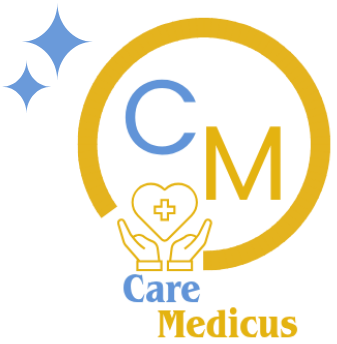In today’s fast-moving healthcare world, maintaining compliance while providing high-quality care can feel like walking a tightrope. Healthcare providers are expected to meet strict regulatory standards without losing sight of what truly matters—delivering exceptional patient care. Finding this balance can be complex, impacting everything from recruitment to patient outcomes.
In this blog, we’ll explore the world of credentialing—examining the common challenges healthcare organizations face and sharing strategies to maintain both compliance and quality. Let’s dive into practical ways to navigate these demands while building a culture of excellence within a regulated environment.
Introduction to Credentialing and its Importance in the Healthcare Industry
Credentialing is a cornerstone of the healthcare industry. It verifies that medical professionals possess the qualifications, training, and experience needed to provide safe, effective care. But in a landscape that’s constantly evolving, credentialing has become more than a routine administrative task—it’s a vital component of maintaining trust, safety, and regulatory compliance.
Healthcare organizations today must strike a delicate balance. On one hand, they must stay aligned with ever-changing rules and standards; on the other, they must ensure patients continue to receive compassionate, high-quality care. Understanding how to manage both effectively is essential for organizations that want to thrive while upholding the highest standards of safety and service.
Understanding Compliance and Regulatory Pressure in the Healthcare Field
The healthcare industry operates under one of the most complex regulatory systems in any field. From HIPAA to Medicare and Medicaid regulations, compliance requires continuous attention and adaptation. These laws are designed to protect patient privacy, safety, and the integrity of healthcare delivery—but keeping up with them can be daunting.
For organizations, compliance isn’t just about following rules—it’s about maintaining credibility and operational stability. A single oversight can lead to significant financial penalties, reputational harm, or even the loss of licensing. That’s why healthcare providers must stay informed through regular training, policy updates, and monitoring.
The real challenge lies in balancing these legal obligations with everyday patient care. Many healthcare leaders find that excessive administrative work can pull focus away from patients. The key is finding systems and processes that ensure compliance without compromising compassion and efficiency.

The Challenges of Balancing Compliance with Quality Care in a Regulated Environment
Striking the right balance between compliance and quality care is one of the toughest challenges in modern healthcare. Complex regulatory requirements often demand detailed documentation and procedural oversight—tasks that can unintentionally shift attention away from patients.
When teams spend more time managing paperwork than interacting with patients, it can lead to gaps in communication and care delivery. Moreover, the continuous updates to healthcare regulations add another layer of complexity. Keeping staff educated and aligned with new rules requires time and resources that could otherwise support direct care initiatives.
There’s also the risk of organizations prioritizing “checklist compliance” over patient-centered care. Meeting the bare minimum standards may satisfy regulations, but it doesn’t necessarily promote an environment of excellence. The goal is to build processes that achieve both—ensuring compliance supports, rather than hinders, the patient experience.
Impact of Non-compliance on Patient Care and Reimbursement
Non-compliance can have far-reaching consequences that extend beyond financial penalties. When organizations fail to meet regulatory expectations, the quality of patient care often suffers. Delayed treatments, incomplete follow-ups, or mismanaged documentation can compromise patient safety and erode trust in the healthcare system.
From a financial standpoint, non-compliance directly affects reimbursement models. Many payment structures are tied to quality metrics and adherence to standards. Failure to comply can lead to denied claims, reduced funding, or even exclusion from insurance networks. These outcomes strain operational budgets and limit the organization’s ability to invest in staff development or new technologies.
Beyond money and metrics, non-compliance damages relationships—with patients, insurers, and regulators alike. Maintaining compliance is not just a legal requirement; it’s an ethical commitment to patient welfare and professional integrity.
Strategies for Effective Credentialing and Compliance Management
Efficient credentialing and compliance management require a mix of smart technology, clear processes, and strong communication. By implementing the right strategies, healthcare organizations can minimize errors, stay compliant, and focus more on delivering quality care.
Utilizing Technology and Automation: Technology has become a game-changer in credentialing. Automated systems simplify data collection, verification, and record management—reducing manual errors and saving valuable time. Credentialing software can track licenses, certifications, and expiration dates, sending alerts before renewals are due. This ensures no provider’s credentials lapse unnoticed, helping organizations avoid compliance risks and service interruptions. Integration with electronic health records (EHR) systems allows teams to access up-to-date provider information quickly during audits or compliance checks. Cloud-based platforms further enhance flexibility, allowing authorized users to collaborate securely from anywhere. In short, embracing automation not only streamlines compliance but also gives healthcare teams more bandwidth to focus on patient-centered initiatives.
Establishing Clear Policies and Procedures: Clear and well-documented policies are essential for a successful credentialing system. Defined guidelines create consistency across departments and help staff understand their responsibilities within the process. Effective policies outline how qualifications are verified, what documentation is required, and how often reviews should occur. Transparency ensures everyone—from administrators to clinicians—knows what’s expected. Regularly updating these procedures keeps them aligned with evolving regulations and best practices. Involving employees in the process builds ownership and commitment, making compliance a shared goal rather than a top-down directive. When policies are straightforward and accessible, they reduce confusion, promote accountability, and support a more efficient and compliant workflow.
Regularly Conducting Audits and Reviews: Routine audits are a proactive way to maintain compliance and improve credentialing practices. Regular reviews help organizations spot inconsistencies early, address gaps, and strengthen their overall processes before issues escalate. Including diverse stakeholders in audit activities provides broader insights and ensures that no aspect of compliance is overlooked. Transparency during audits encourages staff accountability and reinforces the importance of maintaining high standards. Audit results should lead to actionable improvements—whether it’s updating a policy, retraining staff, or enhancing technology. By treating audits as learning opportunities rather than punitive measures, organizations can create a culture of continuous improvement and compliance excellence.
Overcoming Obstacles: Best Practices for Navigating Through Regulatory Pressure
Dealing with regulatory pressure is an ongoing challenge, but it’s manageable with the right mindset and strategy. Start by cultivating a culture of compliance. Every team member—from executives to front-line staff—should understand how their role contributes to meeting regulatory standards. Ongoing training, open communication, and leadership support are key to sustaining this culture. Building positive relationships with regulatory agencies can also make a difference. Open dialogue with auditors or inspectors can provide valuable insights into upcoming rule changes, helping your organization prepare in advance. Leveraging technology tools is another best practice. Credentialing and compliance platforms automate reminders, track changes, and maintain documentation efficiently. Lastly, encourage feedback from the people directly involved in patient care—they often notice issues early and can offer practical solutions for balancing compliance with compassionate service.

The Final Thoughts
At Care Medicus, we believe that true excellence in healthcare begins where compliance and compassion intersect. As regulatory demands grow and patient expectations rise, the key to success lies in maintaining a balance between operational integrity and the delivery of high-quality care.
Now is the time for healthcare organizations to strengthen their credentialing processes, leverage automation, and establish clear, consistent standards that ensure both compliance and quality remain uncompromised. By partnering with Care Medicus, you can streamline credentialing, protect organizational credibility, and reinforce the trust that patients place in their care providers.
Together, we can create a healthcare environment where safety, integrity, and empathy work hand in hand—ensuring that every patient interaction reflects the highest standards of professionalism and care.






Leave a Reply